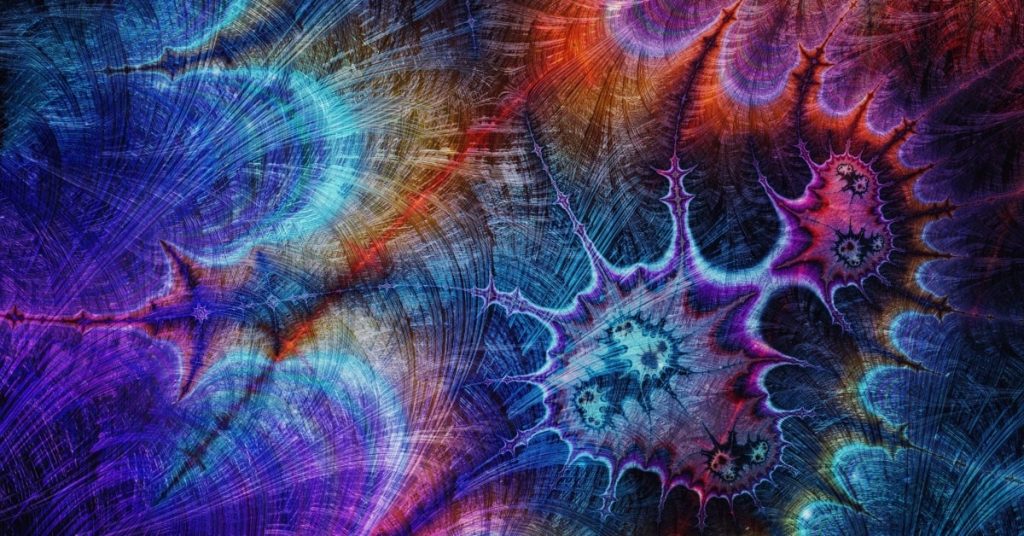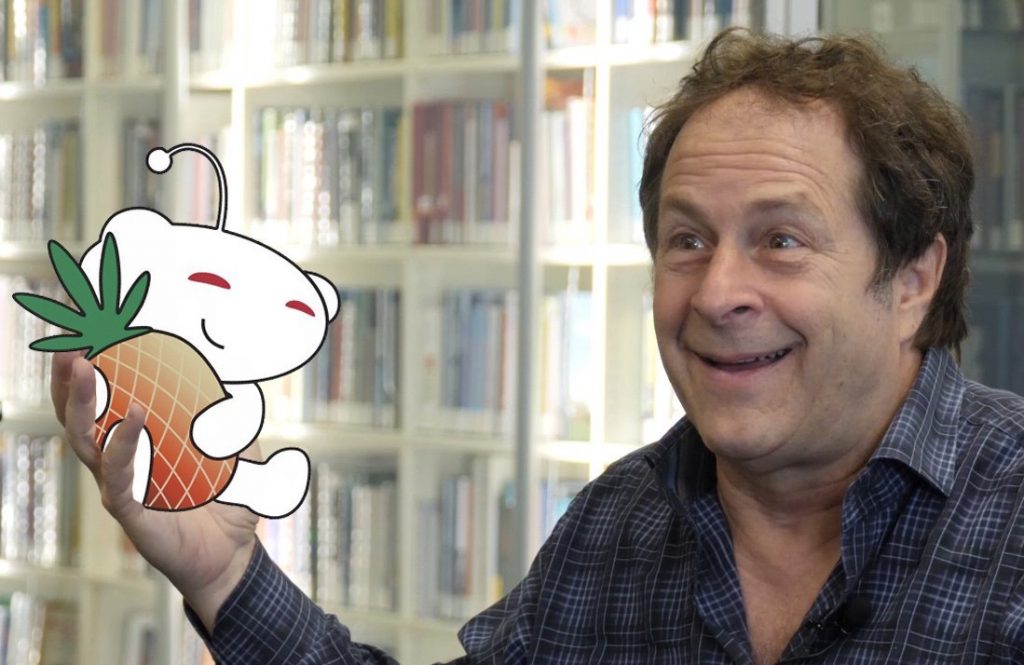Psychedelics: key to consciousness
Enzo Tagliazucchi is a neuroscientist and a professor at the University of Buenos Aires. He will be speaking at ICPR2020 about the first electroencephalography (EEG) research project of DMT in naturalistic settings.
This is part two of a three-part interview series with Prof. Enzo Tagliazucchi
Part one: The Science and Folklore of DMT
Part two: Psychedelics: key to consciousness
Part three: DMT and near-death experiences
You came to psychedelics from consciousness research with the conviction that altered states can be used as helpful tools in the cognitive neuroscience of consciousness. What do you think psychedelics tell us about the relation between mind and brain?
Studying consciousness is difficult for many reasons, for example, how can you know that somebody is having a certain conscious experience?
Now, answering this question with human subjects is not as difficult as with animal models, because I can assume a lot of things about your behavior that I cannot assume in a monkey’s or a rat’s behavior. And this is because I am a human, like you are.
But the cognitive neuroscience of consciousness advances by doing experiments in which we have to assume that there is something like the “normal mind”, so that we can interpret the answers for participants and draw conclusions about their subjective experience. This is to say, we interpret the behavior of our research participants in experiments about consciousness by mentally putting ourselves in their shows and asking what our rational core would do in that circumstance. That is, we idealize our subjects as rational agents, adopting what Daniel Dennett calls the intentional stance.
Following this line of thought, cognitive neuroscience builds up a computational analysis of the mind in which you have to assume some standard functions like attention, language, memory, decision-making, etc. And it does a good job investigating standard human functioning, especially in situations where humans do not deviate from rational behavior.
However, if you go to Google Scholar and type “cognitive neuroscience of schizophrenia”, you are going to find very few papers on that topic, precisely because you can no longer adopt so easily the intentional stance towards these patients. It is as if they had a different kind of mind, and you just do not have a common ground anymore to apply the methodological perspective of classic cognitive neuroscience.
Here is where I think psychedelics enter. They can be useful to establish that common ground. Again, you won’t be able to do normal cognitive neuroscience experiments on somebody on a high psychedelic dose, because whatever function you are trying to probe is not going to work the way you expect it to work. It is a bit like the case of schizophrenic patients and also that of animal models, in that we lack the proper perspective.
But the thing with psychedelics is that you can increase the dose very slowly. So you can start from a very low-level dose and then you can get a mind that is almost like yours, you can disarrange it a little bit. You have this parametric way of moving away from what is the “normal human mind”. You can see how these functions slowly become disarranged as you increase the dose, and I believe this is invaluable. Most neuroscientists haven’t yet realized this, but when they do there won’t be a coming back to the old ways of doing things.
I believe that researchers do not really realize this yet because they are really focused on studying the acute effects of psychedelics (I myself am, too), a state in which it will be very difficult to adapt the very successful program of cognitive neuroscience. But if you focus on microdosing and start climbing up from there, you could build a map of how the mind gets changed parametrically into something different. This is really the huge promise of psychedelics to understanding the healthy human mind.
Psychedelic users have been greatly influenced by Aldous Huxley’s ideas about consciousness. In the sixties, he popularized the theory of the brain as a “reducing valve” that could be opened by the use of psychedelics in order to let a greater degree of awareness or “Mind at large” enter individual consciousness. How would you assess this theory in the light of current neuroscientific knowledge?
There is something to what Huxley said. Something that psychedelics are showing us is that you cannot think of the brain as a machine that you can turn on and off. The brain is always undergoing some storm of electrical activity, a flurry of spontaneous activity. That never stops.
So if I put you in an fMRI machine and you close your eyes, I will still find strong brain activity signals within your visual cortex. Since there are a lot of things going on in the visual cortex even with your eyes closed, it seems that you should be seeing something but, as a matter of fact, you just don’t.
Why are you not conscious of this activity? What is stopping you from seeing all that spontaneous storm of activity in the brain?
A popular theory is that alpha rhythms have something to do with the inhibition of all that activity which is irrelevant to whatever task you are doing at the moment, which is very convenient. So if you ask a subject to perform certain activity you will find alpha rhythms increasing in the brain regions that are not relevant for the task at hand.
But then, one of the most robust signatures of the psychedelic state is that the alpha rhythm is blocked. Jack Cowan’s theory is that all the patterns and fractals you see under psychedelics are precisely what the spontaneous activity of your brain would look like if you could see it – which you can, under the right dose of a psychedelic compound. In fact, the visual cortex is organized following geometric patterns, so no wonder that you are seeing geometric patterns when this activity enters your stream of consciousness.
You could compare the brain with an artificial neural network. These days neural networks can do pretty sophisticated visual processing by representing images in successive layers of artificial neurons. The first thing they do is exactly the first thing the visual cortex does: extract geometric primitives, like all the edges and all the corners of the image. Starting from that, they begin to combine these primitives to build progressively more complex representations, until you get the complete image.
Visual percepts are sort of created in layers, as in artificial neural networks, but in your conscious experience you are never aware of the intermediate layers, you only get the end result. From an evolutionary perspective, you do not need the intermediate representations. They are just part of your internal computational machinery. What you really want to know is what the final object is like.
I think that when someone is under psychedelics, representations enter consciousness too early. You are getting the half-cooked images so to speak. And this is precisely because psychedelics tamper with the inhibition of spontaneous activity. Actually, this hypothesis could be tested using a method from computational cognitive neuroscience known as representation similarity analysis.
Whatever Huxley was thinking with his “reducing valve” wasn’t this, but still there is something that is stopping all this activity from entering consciousness, and whatever that is my conjecture is that psychedelics are good at removing that block.
Strangely enough, contemporary philosophers like Peter Sjöstedt or Thomas Metzinger find in the psychedelic experience arguments for theories as disparate as panpsychism (i.e. everything has mental properties) and eliminative materialism (i.e. consciousness is an illusion). You seem to see the potential of psychedelics for consciousness research from a rather materialist perspective. But why do you think that there is a push for rather the opposite panpsychist views among people interested in psychedelics and the study of consciousness?
Because of the mystical experience, I suppose. One of its major components is the unitive experience, the feeling of not having boundaries, of being part of everything. I think this experience can lead some people to believe in their consciousness as a whole united with everything.
I certainly don’t have anything against this perspective, understood as a philosophical argument. So panpsychism might be fun for philosophers to discuss, but is not very interesting for scientists because you can’t work on that hypothesis. I haven’t seen any serious proposal to apply the scientific method to the question of panpsychism, and I seriously doubt it can be done.
Anyways, scientists aren’t as detached from these philosophical issues as they wished they would be. Actually, they tend to be divided in their positions, even if they cannot state them clearly and explicitly. Some scientists will say that consciousness is only an informational processing procedure in the brain, that it doesn’t really have anything in terms of first person perspective and therefore, that all phenomenal properties are illusory. Philosophers like Keith Frankish or Dan Dennet argue that you cannot really have qualia, at least not qualia with the properties we usually assign to them. This is the core of functionalism, the philosophical perspective that is informing research in cognitive neuroscience.
There is of course the other side of this debate, with people who argue that phenomenology or the first person perspective is the single most important thing that has to be explained about consciousness, and that it cannot be dismissed as illusory. You will find papers of very influential neuroscientists seriously taking their own introspection as grounds to formulate theories about consciousness. And then again, you will find others who only look at third-person data, and dismiss whatever their inner mental life is suggesting about the nature of consciousness.
As opposed to many psychedelic scientists who have extensive experience with these substances themselves, I am in the field of those who believe there is nothing except third person data to be explained. I suppose this position isn’t very common for someone with my research interests and with a long and rich history of personal experience with psychedelics. So what is going on?
I ended up thinking very often, how could one use psychedelics to actually discern a solution in this divide? How can you interpret the psychedelic state not as a panpsychist revelation, but as the way in which the illusion of your qualia starts to disarm, to finally realize that there is nothing at all to realize? For those claiming that qualia are illusory, like Dennett of Frankish, I tend to believe the burden is on them to unravel this illusion. I’d expect that most of them would consider psychedelics (and other altered states) as invaluable tools to achieve this purpose, but for some reason this isn’t a frequently adopted perspective. And I wonder why.
I often have talks with hardcore functionalists who defend that consciousness is just computation and, to my surprise, several of them are ready to claim that psychedelics will “fry your brain” (I got this from Daniel Dennett once, and he made his position public in a recent interview given to ALIUS). I guess there are very academic types who think: “there is my private life, and then there is my life as a scientist, and if I start messing around, mixing one with the other, then I am going to lose my objectivity”.
But I have had my fair share of experimentation and that never happened to me. I am even more convinced after taking psychedelics, that they are somehow disarming this sort of qualia illusion.
Perhaps altered states of consciousness are so interesting because they transform consciousness into something that is easier to dispel as an illusion. They are a tool to show to the brain that the brain itself is no more than a bunch of neurons connected together doing computations. That is my grand picture of how I see psychedelic fit into the scheme of consciousness research.
Psychedelics: key to consciousness Read More »





